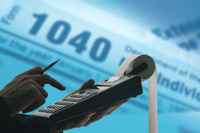 |
 |
|
|
Online Communities Help Raise Start-Up Cash
by Lisa Gerstner, Kiplinger.com |
|
 For
Phu Nguyen, 25, and Peter Seid, 22, inventing Romo, a robot controlled
by a smart phone, was the easy part. The hard part for the co-founders
of Romotive was gauging the market's interest in their prototype,
finding developers to create phone applications for it and raising
money to assemble more robots. For
Phu Nguyen, 25, and Peter Seid, 22, inventing Romo, a robot controlled
by a smart phone, was the easy part. The hard part for the co-founders
of Romotive was gauging the market's interest in their prototype,
finding developers to create phone applications for it and raising
money to assemble more robots.
They turned to Kickstarter,
a Web site anyone can use to gather funds from supporters. Last fall,
the Seattle pair raised more than $80,000 in about a month – more than
double their $32,000 goal – and found like-minded innovators, too.
Sites such as Kickstarter, IndieGoGo and Peerbackers
help people raise money for projects of all sizes, from films to
furniture-making. You explain your idea and offer rewards to backers.
Romotive promised a button to folks who pledged $2, for example, and a
trio of robots to those contributing $212. Some sites release funds
raised only if you meet your goal. Many charge a fee, often about 5% of
the money you raise.
It helps to set clear and realistic goals for the money you want to
raise and the number of products you can prepare and deliver.
- Think carefully about how you'll engage the network.
- Use videos and photos to showcase your vision.
- And set aside plenty of time.
On top of
developing the robots, Romotive's founders spend one to two hours per
day updating their backers on the firm's progress and responding to
e-mails, Nguyen says.
Reprinted with permission. All Contents ©2012 The Kiplinger Washington Editors. www.kiplinger.com.
|
|
|
 The
new year means it's time to start gathering all of that dreaded
documentation to send to good old Uncle Sam! Taking just a few simple
steps right now will make your tax filing far easier and more accurate. The
new year means it's time to start gathering all of that dreaded
documentation to send to good old Uncle Sam! Taking just a few simple
steps right now will make your tax filing far easier and more accurate.
Keep it together. Make a quick list of all the documents or
statements that were needed to complete your return last year—or call
your tax planning professional for a checklist. As you receive tax
documents in the mail, grab your checklist, and mark the item as
received. Then, keep all of the tax documents together in a large file
or envelope marked "2011 TAXES."
Do the math. According to the IRS, the most common mistake on
tax returns is bad math—from transposed numbers to downright incorrect
data. And with one form leading to another, those errors can make a
huge impact. Even if you use tax software, you're not off-the-hook—since
it only adds the numbers YOU put in. Double-check entries carefully.
Every last cent. The IRS receives copies of your Form 1099
earnings each tax season. So, they know how much you make in interest
and dividend income, and they will use that info to double-check your
filing information. Make sure you collect all your earnings statements
and document them on your return.
Sign on the line. It sounds almost silly, but forgetting to
sign a return is actually a fairly common oversight. And the IRS won't
process a return that doesn't have a signature. So, make sure you sign
to avoid resubmitting your paperwork and possibly paying late-filing
fees.
By following the tips above, you can help eliminate some of the
frustration from tax season, as well as make sure you're on track for
the coming year.
|
|
IRS Announces Mileage Rates for 2012
|
|
 Drive a car, truck or van for work? If so, you'll want to make sure you know the standard mileage rates
that the IRS has set for 2012. These mileage rates are used to
calculate deductible costs for driving an automobile for business,
charitable, medical and moving purposes. Drive a car, truck or van for work? If so, you'll want to make sure you know the standard mileage rates
that the IRS has set for 2012. These mileage rates are used to
calculate deductible costs for driving an automobile for business,
charitable, medical and moving purposes.
As of January 1, 2012, the standard mileage rates are as follows:
- Businesses = 55.5 cents per mile driven
- Medical or moving = 23 cents per mile driven
- Charitable organizations = 14 cents per mile driven
The rate for
business miles is unchanged from the mid-year adjustment that became
effective on July 1, 2011, and the medical and moving rate has been
reduced by 0.5 cents per mile.
Before you calculate your deduction, make sure you qualify. The IRS
reminds taxpayers that they cannot use the business standard mileage
rate for a vehicle after using any depreciation method under the
Modified Accelerated Cost Recovery System (MACRS) or after claiming a
Section 179 deduction for that vehicle.
In addition, the business standard mileage rate cannot be used for more
than four vehicles used simultaneously. However, the IRS is accepting
public comments on this policy.
The IRS' standard mileage rates provide ease and convenience. However,
you're not required to use them. If you prefer, you can calculate the
actual costs of using your vehicle instead of using the standard
mileage rates.
|
|


No comments:
Post a Comment